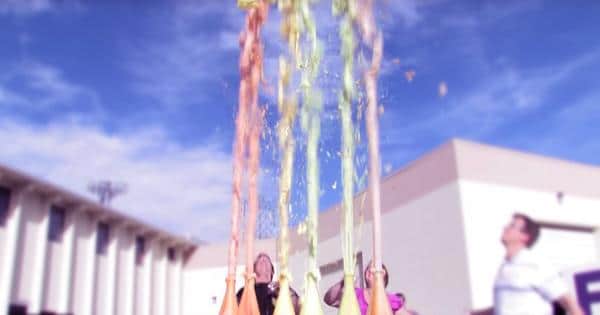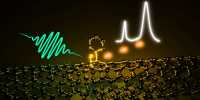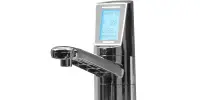Dr Thomas Kuntzleman of Spring Arbor University in Michigan has created a mini-career by exploring this phenomenon. His latest work reveals how altitude – and therefore air pressure – affects the scale of spectacle and theoretically results beyond prediction. Throwing mint candies in carbonated drinks has made the sweet foam geyser a favorite on the internet and a great way for kids to get acquainted with the chemistry.
There are two ways to go about not being satisfied by following in the footsteps of others; Either make the whole thing bigger, like dipping soda in a vat in a suite made of Mentos, or tweeting the test a little to learn more. We never know who Mentos first put in the soda bottle, but the dramatic consequences have been known since at least the 1980s. The performances on TV in the 2000s attracted a lot of attention.
Kuntzleman has taken the second path. Three years ago he published an article explaining why diet drinks work better than sugar sodas short version, low viscosity. He recently used his favorite demonstration to teach people about the importance of physical distance to flatten the curve that spreads the COVID-19 epidemic.
In the meantime, Kuntzleman has explored the effect of ambient air pressure on soda geysers. Fiji drinks are made by forcing carbon dioxide into the water at 4-5 atmospheric pressures. The gas starts to escape as soon as the bottle at the top comes up, as there is no pressure to maintain so much solubility, but usually it can only do so on the surface or at certain sites.If the release occurs in sufficient quantity, the gas will take with it some liquid foam. So it is understandable that lower air pressure leads to more impressive waterfalls such as mountain tops, gas extraction and more.
Students were able to show this increase more than gas law estimates and there must be an unexpected secondary effect at higher altitudes. Kuntzleman was actually able to create more bonus where the air was narrower, but in the journal Chemical he describes the determination of high school chemistry students to question whether the gas law alone could be responsible for the increased amount produced.
To test the concept, Kuntzleman first added candy to cola in the lab at different pressures to measure the mass lost from the liquid. He then climbed from Death Valley, California, to Pikes Peak, 13 meters (43 feet) below sea level, to the top of Colorado’s 4,200-meter (14,100 feet) location.
During the experiment, Kuntzleman also discovered why Mentos worked so well for this experiment. He found the taste of mint irrelevant. Instead, Mentos has just the right roughness, producing perfect-sized bubbles (2−7μm, 0.00008-0.00028 inches) and rich in nucleation sites that induce bubble formation.















